Chinese painter forges inimitable style after decades abroad
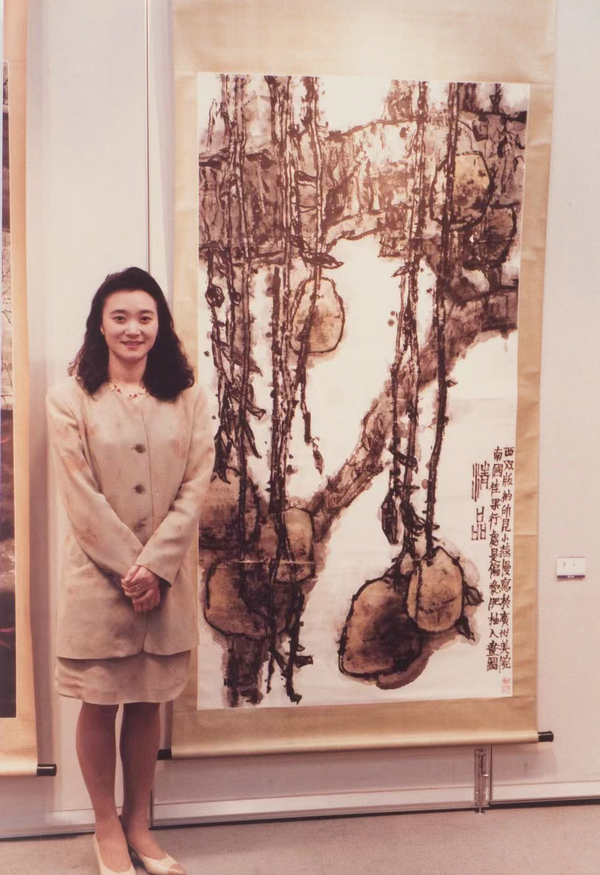
Chinese painter Wang Xiaoyan and her artwork. [Photo/CGTN]
Born in the famous historical city of Xi'an in Shaanxi, Chinese ink and wash painter Wang Xiaoyan studied and lived in Japan for over two decades, where she earned a diploma from the Tokyo University of the Arts. Inheriting ideas and techniques from old classics while also trying to break conventions has defined her career for decades.
Wang's father Wang Ziwu is also a widely acclaimed painter. Under his guidance, she started learning to paint at five years of age. "My first memories of him as a young child are of him painting every day. He didn't talk much, but he would often paint for long periods," Wang recalled. She describes her father as her first and most important teacher.
Encouraged by her father, Wang not only studied the ink-wash techniques of Chinese painting but also facsimiled numerous Western works as she experimented with various Western techniques.
"Wang Xiaoyan gained a deep understanding of the artistic traditions of Chinese painting through her father's guidance and mentoring. Her use of brushes, ink and color represents the artistic accomplishments of traditional Chinese painting," said Fan Di'an, Chairman of the China Artists Association.
Wang learned the style of painting with heavy coloring when she studied at the Xi'an Academy of Fine Arts. She even went to Yongle Palace to copy the ancient murals there. While sticking to the techniques of traditional Chinese painting, Wang also dipped her toe in Western approaches. "I liked very much the techniques of some Western artists while I was in college. As such, I learned from the paintings of Joan Miró and Gustav Klimt. Their paintings are all very decorative. That's a style I tried to imitate."
At the end of the 1980s, Wang went to Japan, hoping to establish her career in a foreign land. She visited many galleries and art museums and was impressed by the way pigments were used in Japanese paintings. The techniques are akin to the claborate-style and heavy coloring techniques seen in Chinese paintings. But over the centuries, Japan gradually developed its own distinctive style.

A portrait of Kayama Matazō by Wang Xiaoyan.[Photo/CGTN]
Wang decided to learn the art of Japanese painting. She gained admittance to Tokyo University of the Arts and became a student of Kayama Matazō, an important contemporary artist in Japan.
Under the guidance of this painting master, Wang created many works imbued with a fresh style, such as one depicting the spring scenery of Ueno Park in Tokyo. "Kayama Matazō patiently taught me how to paste gold foil, as well as how to paint pigeons and cherry flowers. This was different from the techniques used in Chinese paintings, in which the lines are drawn first and the colors added later. In Japanese painting, the pigments are added layer by layer after having been ground up," Wang said.
While experimenting with these different pigments, Wang was greatly inspired and motivated to explore new creative avenues. Since then, her works have displayed not only the freehand techniques of Chinese painting and the realism in Western painting, but also the decorative designs she learned in Japan.
In 1991, she held her first solo exhibition in Tokyo, less than three years after she arrived in Japan to develop her career. In the following decades, Wang hosted over twenty exhibitions in Japan, gaining a large fanbase there.
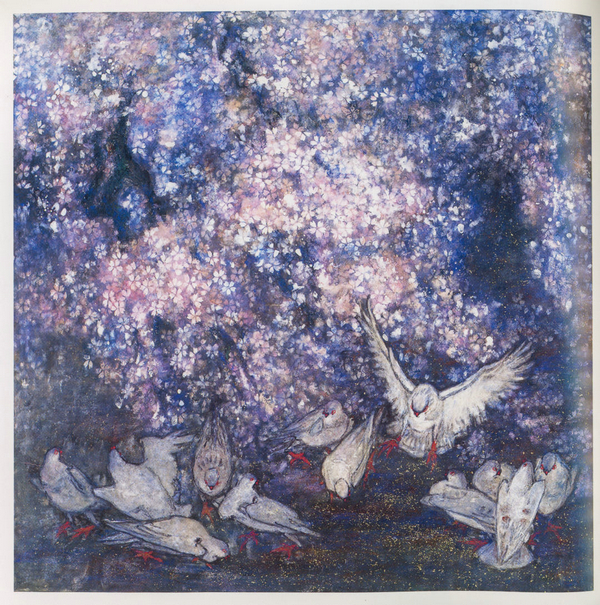
Wang Xiaoyan's painting Spring Scenery.[Photo/CGTN]
Wang returned to China in 2010. Her paintings, inspired by the techniques and themes of different cultures and civilizations, have gradually won more attention in her home country. "Her experience of studying in Japan infuses her works with the charm of Chinese painting and the exquisite characteristics of Japanese painting. Her skills in using colors to depict flowers make her works brilliant and dynamic, giving viewers a strong feeling of vitality," said Chen Yuhua, deputy manager at the People's Fine Arts Publishing House.
Nowadays, Wang still creates plein-air paintings in her spare time. And her artistic styles are always developing. "Returning to my hometown makes me feel that traditional Chinese painting is the most beautiful style, so I've started using more ink-wash lines in my works. Painting is like my diary. I like nature, especially when the flowers bloom in spring. Seeing fine scenes like the flowers and the red walls in Beijing makes me want to paint more. Painting is my lifelong career and I need to keep learning and innovating," she said.
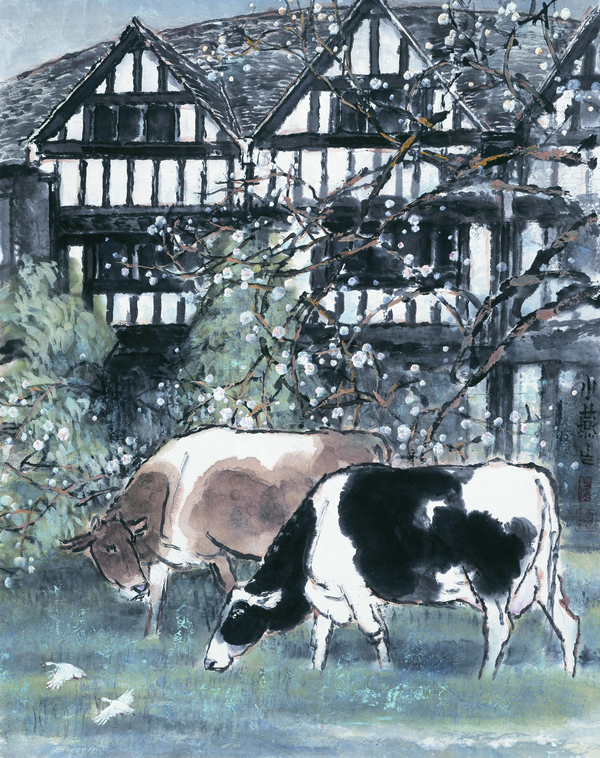
Wang Xiaoyan's painting Spring of London.[Photo/CGTN]
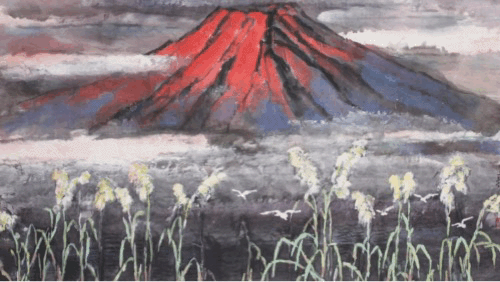
Wang Xiaoyan's painting Mount Fuji.[Photo/CGTN]
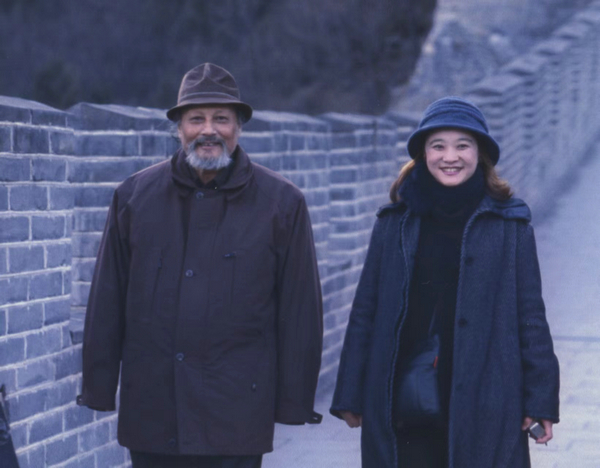
Chinese painter Wang Xiaoyan and her father Wang Ziwu.[Photo/CGTN]

